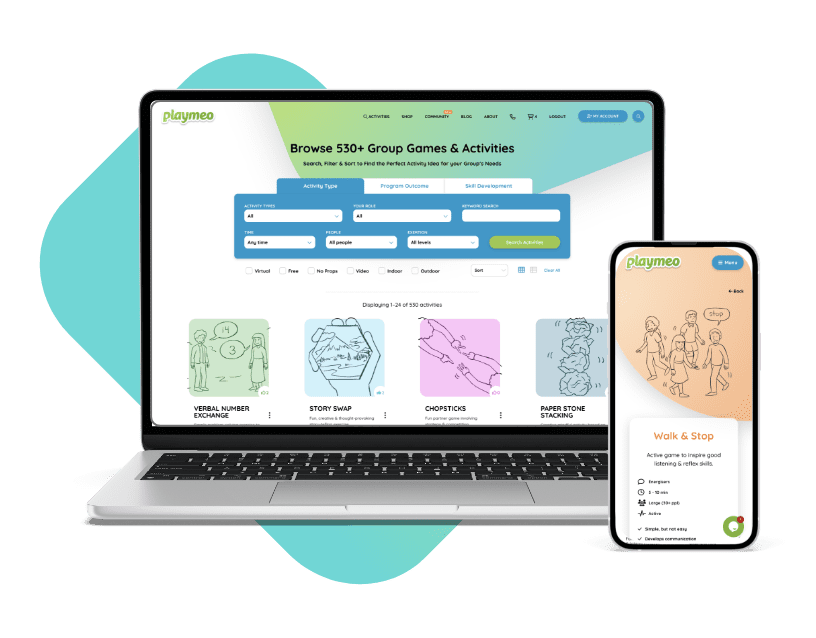Download our free 28-page ebook jam-packed with outrageously fun activity ideas.
What To Do (& Not Do) when Leading Lateral-Thinking Games
This week’s Facilitator Tips episode focuses on the presentation of lateral-thinking games and how to play them powerfully while being sensitive to your group’s needs.
<< Go to Episode 22 Go to Episode 24 >>
Many people groan at the mention of lateral-thinking games because of horrible experiences playing them in the past.
It doesn’t have to be this way; this episode shows you how to present them properly and successfully.
Click the play button above to get started.
Want to join the conversation?
Please leave a comment at the bottom of the page (you must be logged in.)
Don’t have a playmeo account? Join today.
Useful Links & Resources
- Lateral-Thinking Exercises – take a look at these fun group lateral-thinking games and activities – The Man in the Moon, Crossed or Uncrossed and Johnny Oops – to see them presented powerfully and sensitively to the needs of a group.
…
Video Transcript
Hi there and welcome to Episode 23 of the Facilitator Tips video series.
My name is Mark Collard and I’m an experiential trainer and author, and today I want to focus on how to run lateral-thinking exercises, those games and activities and little things that we sometimes do to fill in time that people have to think creatively to identify what that secret, hidden key is. They’re so subtle, they’re not obvious right from the beginning, and then gradually work it out.
Now I happen to be one of those people who really likes those sorts of activities, but I’ve learned a few things about their use because I know many people don’t like them at all. In fact, they’re so sensitive about them even just the slightest hint that one is about to come, they’ll shut down.
So here’s a few things that I’ve learned that really helped me not only make them successful but also useful for the whole of my group. The first part is and it’s critical, to frame, to frame it upfront. I’ll even say things like, “Hey, within the next 5 to 7 minutes everyone in this room is going to know what’s going on. In the beginning, it may not be clear.” So people kind of hang on knowing that this is not going to last so long.
And then as people give it a go through trial and error, I encourage people. And importantly as soon as a few people start to work out what’s going on, I encourage them to help me present it, so engaging more of the group.
I then give clues, bigger and bigger clues. So they start off subtle then they get really really big and loud and almost difficult to miss although sometimes they still get missed. Make them extra, extra big.
And then finally give the solution, because if that’s what you said in your framing upfront, that’s what you want to be able to do.
Now I would also suggest that if you happen to have struggles with a particular experience like this, then don’t do too many in a row, because if you didn’t get it the first time you probably won’t get it the second time either. So I often do no more than two at a time.
And naturally, there’s real good reasons for integrating these into your program. They can be fun, they can fill time, but they could also add meaning maybe to something related to the content that you’re about to deliver. And that is one of the reasons I frequently include them in my programs.
So I would like to know what your strategies are. What sorts of ways do you actually help any activity but particularly lateral-thinking activities become successful? Please leave a comment at our blog.
And also for more show notes, more links, and more information about this sort of stuff, check out at www.playmeo.com Episode 23.
And for all of this and all of our free content, go grab our app. It’s free, and it will give you all the information related to the free blog posts, our free video tutorials, our free activities. Just go to your favourite app marketplace.
Until then I’ll look forward to seeing you next time. Bye-bye.






